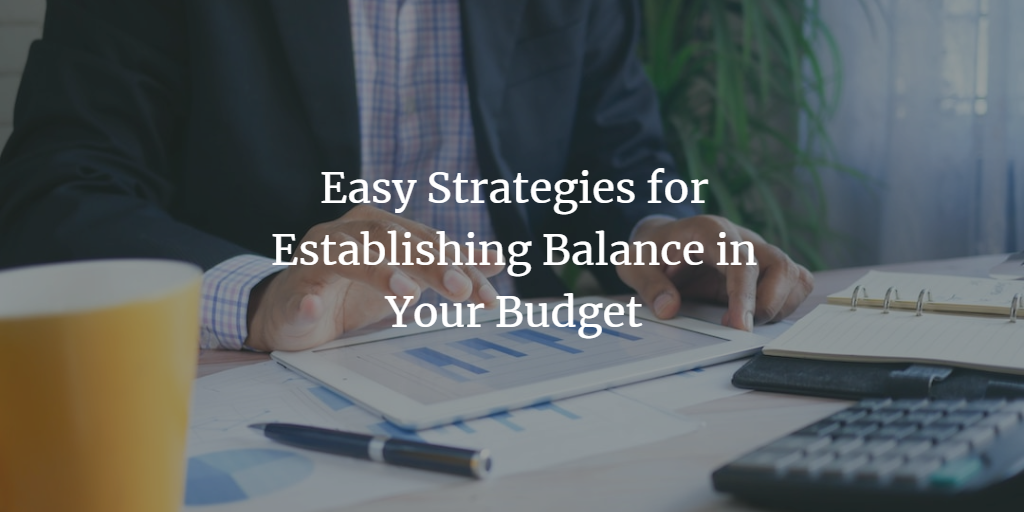We have talked about Creating Budget and Budget management as well as discussed different Budgeting techniques. The basic thing to look out for now is to find a balance in your budget which will make your budget the great budget and you will learn the art of effective budgeting. The idea is simple, you don’t have to be too tight which doesn’t let you enjoy and at the same time, you don’t want to be too lenient which will destroy your financial position. So that’s why finding the perfect balance is the key to having a great budget and a great financial journey. The importance of maintaining a balanced budget is simple to have a healthy financial life as well as having financial stability.
I know you have created the budget and finding it hard to manage and now trying to make your budget a balancing one seems to be an impossible task. It is not easy, but it is quite possible. What we have to do is to do some trial and error method and thus we will eventually find that perfect balance. Mainly the question for most people is how to balance expenses and income effectively. So let’s go through some of the easy strategies for establishing balance in the budget as well as some tips for achieving budget equilibrium.
Identifying Needs vs. Wants
This is the basic difference you have to find out if you want to have a great budget. Needs are things like food, water, shelter, and clothing. Wants are things like cable TV, designer clothes, and vacations. Now once you find out the differences, you can be in a much better position to create balance in your budget. This is because when you are short of budget, you can reduce your wants as needs cannot be reduced further. It’s so easy to spend money on something you want instead of knowing the consequences.
If you are constantly spending more than you earn, you cannot be in a better financial position. And the best place you can cut off your expenses is from wants. I am not saying that you should not spend money on yourself or on something you want. Just that you have to be a little cautious about overspending on your wants so that your budget remains in balance to gain financial stability.
Our goal should be to focus on our needs first so that we fulfil those first and then take care of our wants if we have any. The differences between needs and wants become way too important to create a balanced budget strategy for families. This step is needed to have great financial planning or any other financial goals you have or if you are thinking of retirement planning.
Tracking Expenses and Setting Budgets
To establish the balance in your budget you should know all your income and expenses and for that, you need to track all your expenses whether it’s small or big. This means you have to have a habit of writing down the expenses whether by maintaining a diary or by some app.
I know this can be a challenging task when you have so many payment apps with you now. But the good news is that there are some budgeting apps which can help you to make this process a little easier for you. Using expense tracking will give you a better idea of where your money is going and from where you can start making some reduction in expenses.
Taking Advantage of Automation
If you are not finding time or having a hard time tracking your expenses then you can use the services of some major apps which can automate your budgeting process. You might have to shell out some money for their services, but those are worth spending for.
These services can you you enormous amount of insight into your expenses like the categories, and charts and thus you get to know all about your spending. Like if you feel that your monthly OTT subscription is increasing month by month, try to reduce that by lowering the number of subscriptions you are not using.
Cut Back on Subscriptions and Unnecessary Purchases
So in the previous section, you will be able to find out your categories and spending pattern and now it’s time to reduce the expenses little by little. As mentioned earlier you can start to look at all the subscription lists and then decide on which one you could live without. You might be surprised that small amounts can lead to huge sums of money in your monthly expenses.
I am not saying that you should cut down everything. But only those which you are not using regularly. Similarly, if you are tight on budget and going out every single day then you have to introspect and cut down on going out to save some money.
Saving small money doesn’t look like much now, but these small changes when done continuously can help you to reduce your expenses significantly.
Prioritizing Debt Payoff and Savings
Our main goal in finding a balance in the budget is to save some amount for rainy days or our future expenses. When we have to create a balanced budget we have to start saving more and more as well as reduce the debt as much as possible. If you have a debt then whatever amount you saved from following the previous section can be used to pay off your debt. The debt should also be paid in the sequence of the debt which has more interest. This will help in reducing the debt now and saving in the future.
For saving also have to find out what your goals of yours, whether short-term (creating an emergency fund) or long-term (saving up for a house) and thus setting the target is very much necessary. Setting a target will help you to narrow down how much you are required for every goal and thus how much you have to save for reaching that goal amount.
Play the Long Game
The above changes cannot happen in one day month or even one year. To create a balance in your budget you need to think long term and thus ultimately make your life financially better. You need to make changes now so that the results are visible in the long run.
This is true not only for financial health but everything in life, the changes done today will have a big impact in future.
Be Flexible but Stretch Yourself
Now the problem is, that things don’t go as planned but we have to continue doing what we are doing to make ourselves better. To reach our financial goals we have to be flexible and adapt to the situation. For some months you cannot save anything because of some priority and that’s ok. You have to be flexible enough to accommodate those changes.
FAQs:
How can I create a balanced budget?
To create a balanced budget you have to do the following steps:
- Identifying Needs vs. Wants
- Tracking Expenses and Setting Budgets
- Taking Advantage of Automation
- Cut Back on Subscriptions and Unnecessary Purchases
- Play the Long Game
- Be Flexible but Stretch Yourself
What are some tips for maintaining balance in my budget?
One tip for maintaining balance in your budget is to track all your expenses, once tracked you have cut down unnecessary expenses. The ultimate goal of maintaining balance in the budget is to have financial stability.
Why is having a balance in my budget important?
The importance of maintaining a balanced budget is simple to have a healthy financial life as well as having financial stability.
Can budgeting tools help me achieve balance in my finances?
Budgeting tools can provide you with an enormous amount of insight into your expenses like the categories, and charts and thus you get to know all about your spending. Like if you feel that your monthly OTT subscription is increasing month by month, try to reduce that by lowering the number of subscriptions you are not using.
What are the consequences of not having a balanced budget?
The consequence of not having a balanced budget is that your expenses will always go up more than your income. You always fell short of money to pay for your basic needs. Your debt would be increasing as well as you would not be saving enough for your financial goals.
Balancing your budget can be difficult, but it’s not impossible. With a few easy changes, you can start to create a more balanced budget that works for you. Remember, it’s important to be realistic and to find solutions that work for your unique financial situation. Don’t be afraid to ask for help if you need it. With a little hard work and some smart planning, you can achieve balance in your budget and start to improve your financial situation.
 Gopesh Sharma
Gopesh Sharma 
 The Best Budgeting Methods to Consider for Financial Success
The Best Budgeting Methods to Consider for Financial Success